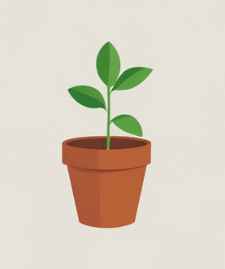Not much garden space? No problem.
With vertical gardening, you don’t need a big yard—or any yard at all—to start growing your own fresh food at home.
I started looking into vertical gardening a while ago because, like many people, I don’t have endless room to plant things in the ground. Over time, I realised it’s one of the easiest, smartest ways to grow more in less space. Whether you’re in a small backyard, an apartment balcony, or even just a patio, vertical gardening can turn a tight corner into a little food-producing powerhouse.
In this post, I’ll walk you through what vertical gardening actually is, how it works, and why it might be perfect for your space—especially if you’re new to growing food at home.
🌱 What Is Vertical Gardening?
Vertical gardening is exactly what it sounds like: growing up instead of out.
Instead of planting in rows along the ground, you stack, hang, or train your plants upward. This might mean growing herbs in a wall planter, strawberries in a stackable container, or tomatoes up a trellis.
While vertical gardening is often seen in urban flower displays, more and more people (like me) are using it to grow real food—salad greens, herbs, strawberries, even climbing vegetables like beans and peas.
The best part? It fits in places where traditional gardens just don’t work.
💡 Why Try Vertical Gardening?
Here are a few reasons why vertical gardening is growing in popularity—especially among people with smaller spaces:
- Save space – Perfect for patios, balconies, or tiny backyards
- Less bending – Easier on the knees and back (great if that’s an issue for you)
- Good airflow – Helps prevent plant diseases and keeps pests down
- Water efficient – Many vertical systems use less water than pots or beds
- Visually tidy – Keeps your garden neat and organised—even in tight areas
If you’ve ever looked at a blank balcony wall or a small concrete corner and thought, “There’s no way I can grow anything here,” vertical gardening proves otherwise.
🪴 Types of Vertical Gardening Setups
There’s no single way to grow vertically. In fact, part of the fun is finding what works for your space, budget, and style. Here are some common options:
- Trellises – Great for climbing crops like beans, cucumbers, or tomatoes
- Stackable planters – Good for herbs, strawberries, and leafy greens
- Wall-mounted systems – Hang pockets or planters on a fence, wall, or balcony railing
- DIY pallet gardens – Upcycled and popular, especially for herbs
- Vertical tower systems – Like the Garden Tower 2, which holds up to 50 plants in just 4 square feet
👉 Personally, I’ve spent quite a bit of time researching the Garden Tower 2, and it looks like one of the best vertical systems out there—especially for growing food in a small space. You can read my full review here.
🍓 What Can You Grow in a Vertical Garden?
You’d be surprised how productive a vertical garden can be.
Here are some crops that do especially well:
- Leafy greens – Lettuce, spinach, kale, rocket
- Herbs – Basil, parsley, mint, coriander
- Strawberries – They love to hang over edges
- Compact peppers – Like jalapeños or lunchbox peppers
- Climbers – Beans, peas, cucumbers (with support)
Vertical gardening isn’t ideal for large root crops like potatoes or carrots, but that’s okay—you can still grow a lot of everyday food in a small footprint.
🤔 Is Vertical Gardening Right for You?
If any of these sound like you, vertical gardening could be a perfect fit:
- You have limited outdoor space (balcony, patio, courtyard)
- You want to grow food without a big garden bed
- You’re looking for a low-maintenance way to start gardening
- You’d rather not be bending or kneeling to weed
- You’re curious about urban gardening or self-sufficiency
In short: vertical gardening is ideal for people who want to grow smarter, not just bigger.
👉 Next Steps
Now that you know what vertical gardening is all about, you might be wondering how to get started.
Here are some helpful next reads:
- 🌿 What Can You Grow in a Vertical Garden?
- 🪴 Garden Tower 2 Review – Is It Worth It?
- 💧 How to Water a Vertical Garden the Right Way
If you’re ready to jump in with a full system, I recommend checking out the Garden Tower 2. It’s one of the most space-efficient and beginner-friendly setups I’ve come across.
❓ FAQ – Vertical Gardening
Can I build a vertical garden myself?
Yes! Many people use recycled pallets, hanging shoe organisers, or stackable pots. But if you want a simpler, all-in-one solution, something like the Garden Tower 2 saves time.
Do I need a lot of sunlight?
Ideally, yes. Most food plants need at least 4–6 hours of direct sunlight a day. If your space doesn’t get that much, stick to shade-tolerant herbs like mint and parsley.
Is vertical gardening good for beginners?
Absolutely. It’s easy to maintain, takes up less space, and you don’t need to dig into the ground. Plus, it’s fun to watch things grow up instead of out!
